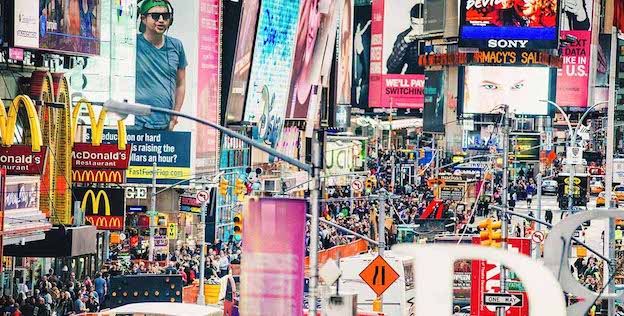

Traditional media have had their worst year on record in recent memory, driven by sharp and substantial cuts in automotive, retail, travel, and transport ad budgets. The latest projections, derived from data from over 100 markets globally, constitute a downgrade of 2.1 percentage points compared to WARC’s previous global forecast of -8.1% made in May earlier this year.
The World Advertising Research Centre or WARC, the global marketing intelligence service, has reported that global advertising is expected to fall by 10.2 percent or $63.4 billion to $557.3 billion this year, led by sharp cuts in investment in the automotive, retail, and travel and tourism sectors as a result of the COVID-19 outbreak.
The report says that it will take at least two years for the global ad market to fully recover, with a forecast 6.7% rise in 2021 that would be only enough to recoup 59% of the losses incurred in 2020. The ad market would have to grow by 4.4% in 2022 to match the peak figure of $620.6 billion achieved in 2019.
If the $4.9-billion campaign spend during the US presidential election cycle were to be excluded, the global ad market will be set to shrink by 11.0 percent or $68 billion this year. In absolute terms, this is being reckoned as worse than the last recession in 2009, when the ad market shrank by $61.3 billion or -12.9 percent. After accounting for inflation, the real ad market decline, it is estimated, will be double the rate of the Great Recession.
TRADITIONAL MEDIA
Traditional media has had an exceptionally bad year, accounting for the almost complete decline in the advertising market in 2020. Globally, ad spend has slipped by a fifth (-19.7%) or $62.4 billion, to a total of $253.9 billion, with linear TV (-16.1%, down $29.9 billion) seeing the largest absolute cut in ad budgets.


Cinema (-46.5%, down $1.5bn), Out of Home (-27.3%, -$11.3bn), newspapers (-25.5%, -$9.8bn), magazines (-25.4%, -$4.0bn), and radio (-18.4%, -$5.9bn), along with TV, all showcased their worst performance in WARC’s 40-year history of monitoring the global ad market. Most are expected to see growth in 2021, though this would be more a reflection of a poor 2020 than any steady, meaningful recovery.
The online advertising market — 54.4% of this year’s total — has recorded a flat trajectory (-0.3%) at $303.3 billion, though this was the first year, growth had not been recorded after the Dotcom crash of 2000.
Online video is the only ad format that has seen its prospects somewhat better in the forecast. Globally, viewing catapulted this year in the wake of lockdowns around the world to contain the Corona virus. In fact, ad spend is expected to rise by 7.9 percent to $52.7 billion this year and a further 12.8 percent in 2021.
AUTOMOTIVE TOPS 2020 LOSSES
Advertising spend in the automotive sector was down by a fifth (21.2 percent), or $11.0 billion, to $41 billion this year, which means the sector alone accounts for almost one in five (17.4 percent) lost dollars. The retail sector also contained its spend: at $54.3 billion it was 16.2 percent ($10.5 billion) lower than in 2019.
The travel & tourism sector was acutely impacted by the global pandemic and this has resulted in ad spend falling by more than a third (-33.8%, or $8.4bn) to $16.4bn this year. In a sign of the times, the government & non-profit sector was the only to increase ad spend in 2020.


Meanwhile, all product categories are likely to hike advertising investment next year, with travel and tourism (+19.5 percent) leading growth, though only three sectors, that of telecoms and utilities (+10.6 percent), media and publishing (+8.4 percent), and business and industrial (+5.3 percent) will exceed their 2019 total.


“(The year) 2020 was the most hostile year for the advertising economy ever seen in our 40 years of market monitoring,” observed James McDonald, Head of Data Content, WARC, and author of the research. “Some platforms — such as e-commerce and social properties — have emerged from this year relatively unscathed, but the vast majority of the media landscape has witnessed a severe material impact.
“An immediate bounce back is not on the horizon; while growth is expected in most corners of the industry next year, this will be more reflective of a tumultuous 2020 than a sterling 2021. Rising unemployment is set to depress consumption demand well into next year, and though the prospect of a vaccination program offers cause for optimism among consumers and businesses, it may only be a waypoint in a recovery that stretches two years,” McDonald added.







